The Château d’Amboise rises above the Loire River on a strategic promontory long occupied for its defensive importance. Transformed from a medieval fortress into a Renaissance palace under Charles VIII and Louis XII, it became one of the principal residences of the French court at the turn of the 16th century. Today, only part of the former royal complex survives, preserved through extensive restoration campaigns that highlight the architectural evolution of the site.
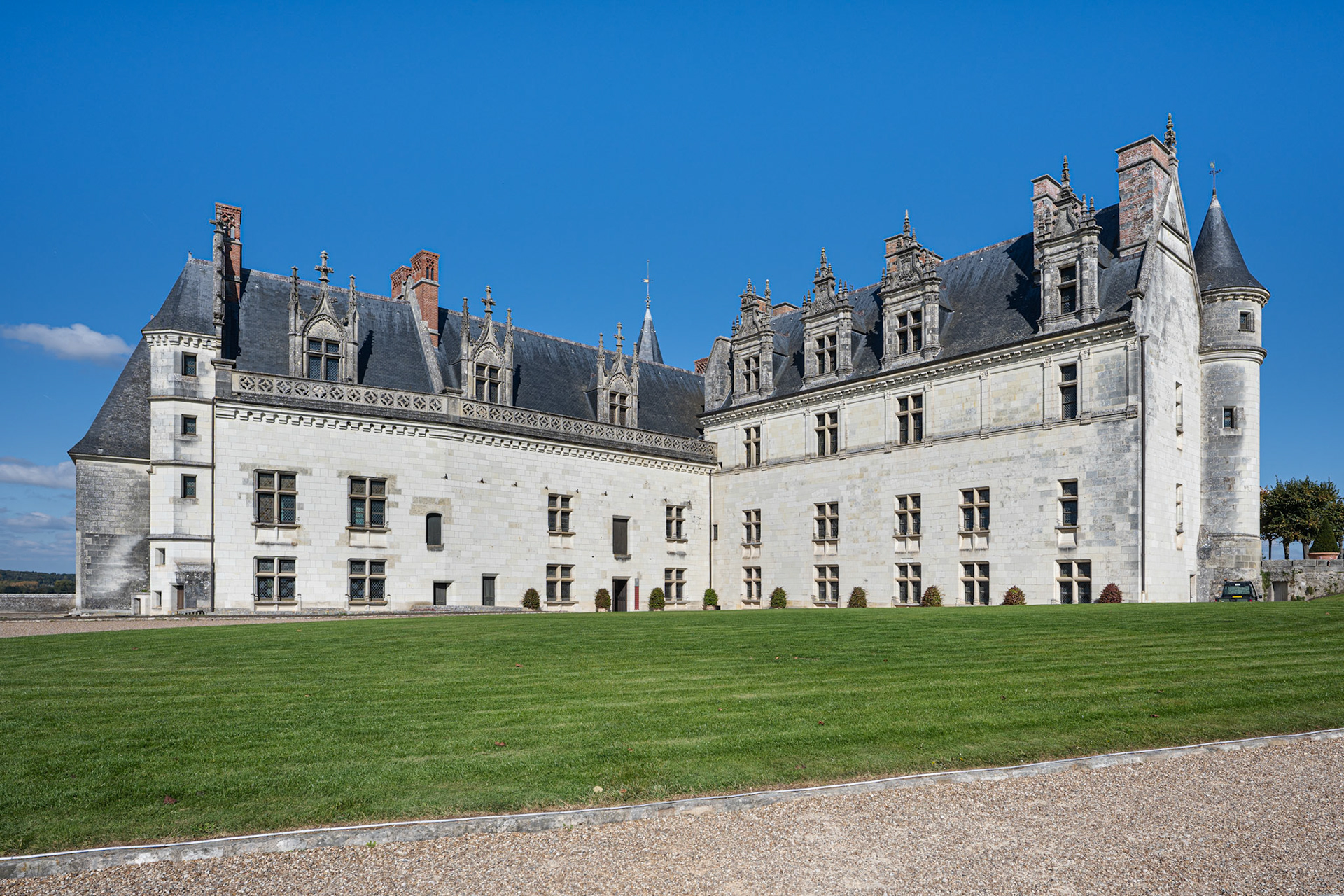
The Salle des États is one of the principal surviving interiors of the royal residence and reflects the transition from medieval to early Renaissance architecture at Amboise. Originally used for ceremonial gatherings and administrative functions of the royal household, the hall is characterized by its timber-framed ceiling, large fireplace, and series of windows overlooking the Loire.
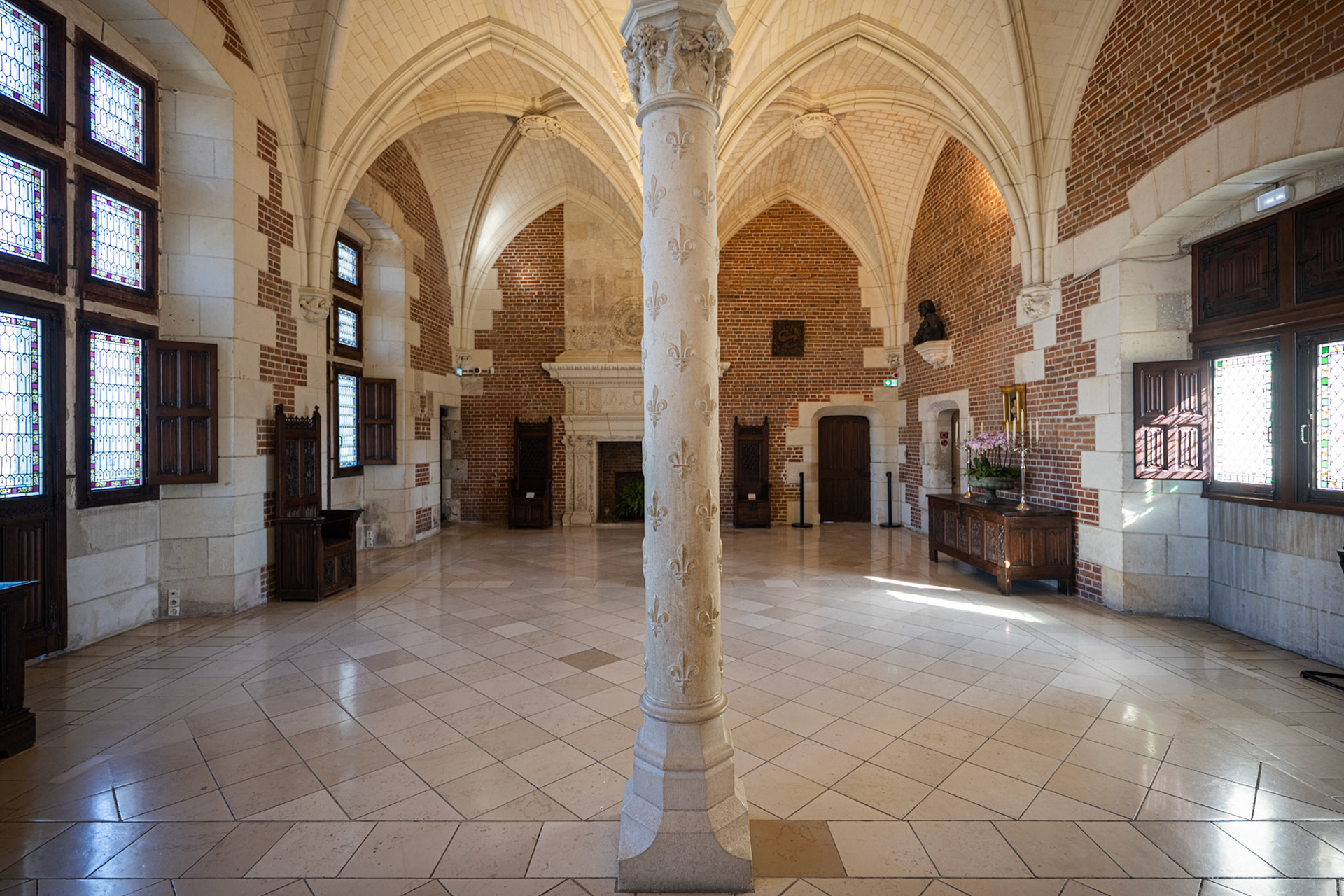
The Cabinet Louis-Philippe presents a reconstruction of a working study from the reign of Louis-Philippe, evoking the atmosphere of the château when it briefly returned to royal ownership in the 19th century. The room features a portrait of the Duchess of Orléans, mother of Louis-Philippe.
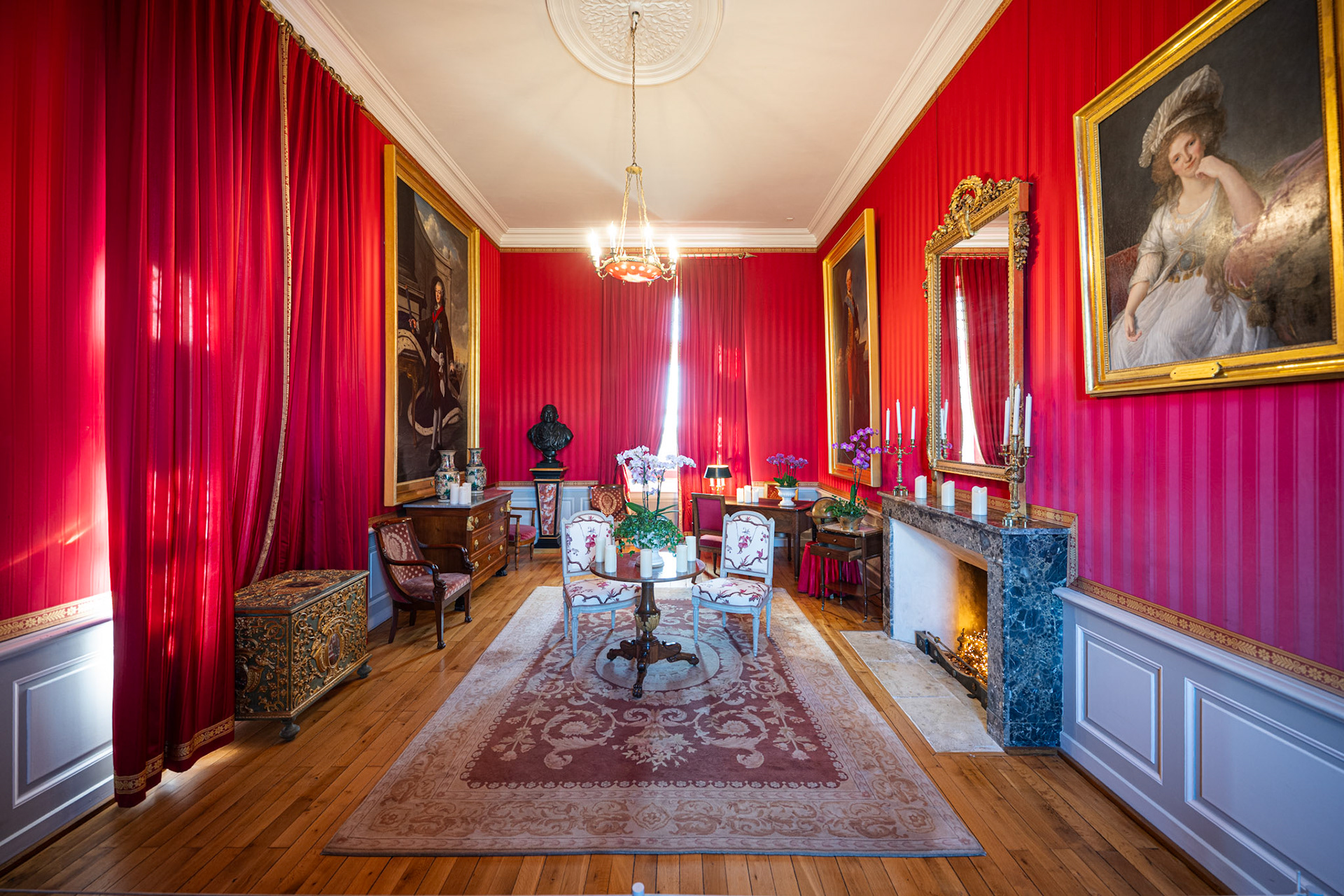
The Chapel of Saint-Hubert, perched on the northern terrace of the château, is a finely carved example of late Gothic architecture built between 1491 and 1496 under Charles VIII. Its façade and portal are richly decorated with intricate stonework typical of the flamboyant style, including pinnacles, cusped arches, and scenes illustrating the life of Saint Hubert. The chapel is also known as the presumed burial place of Leonardo da Vinci, who spent the final years of his life at Amboise under the patronage of François Ier.
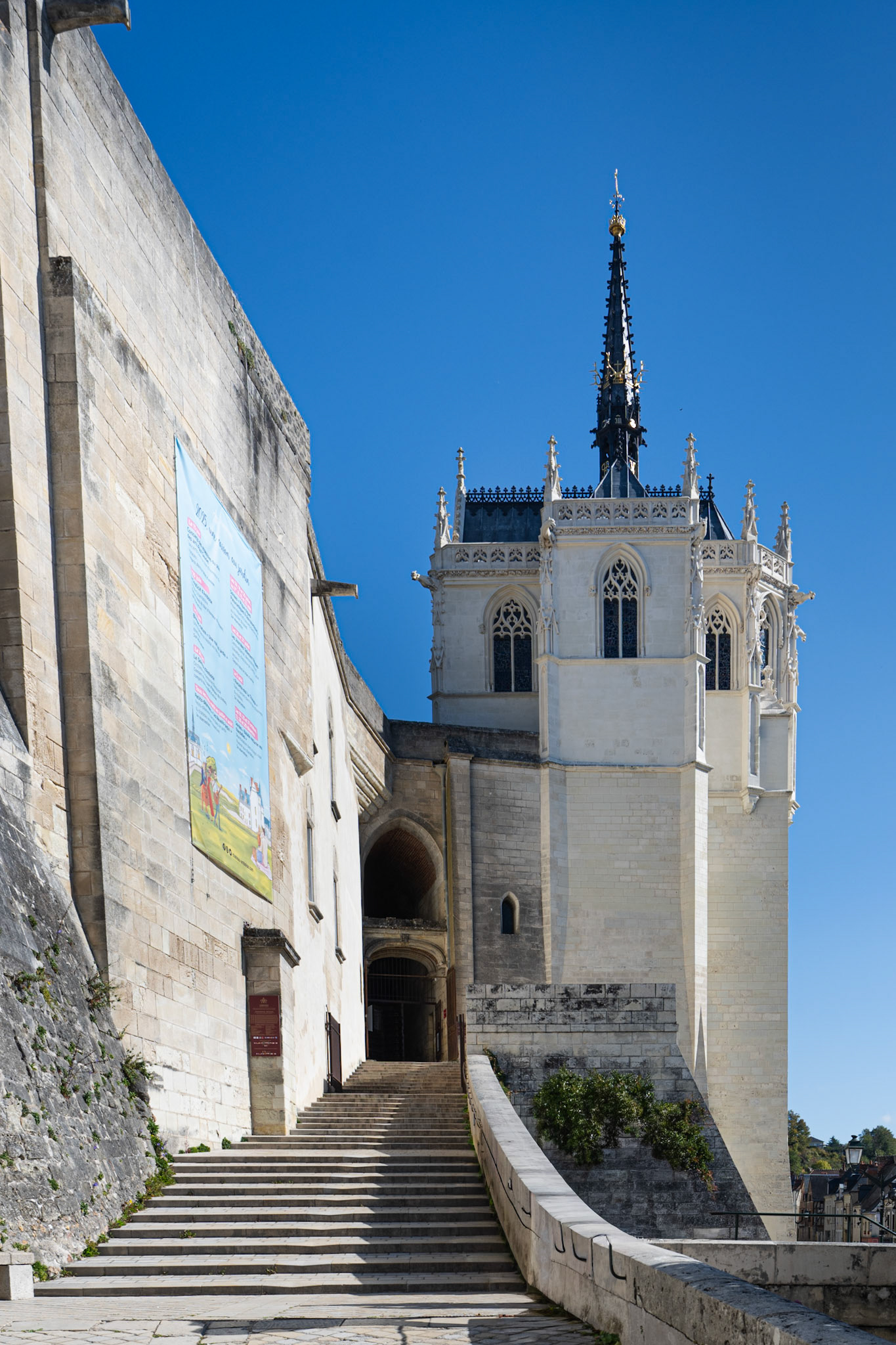
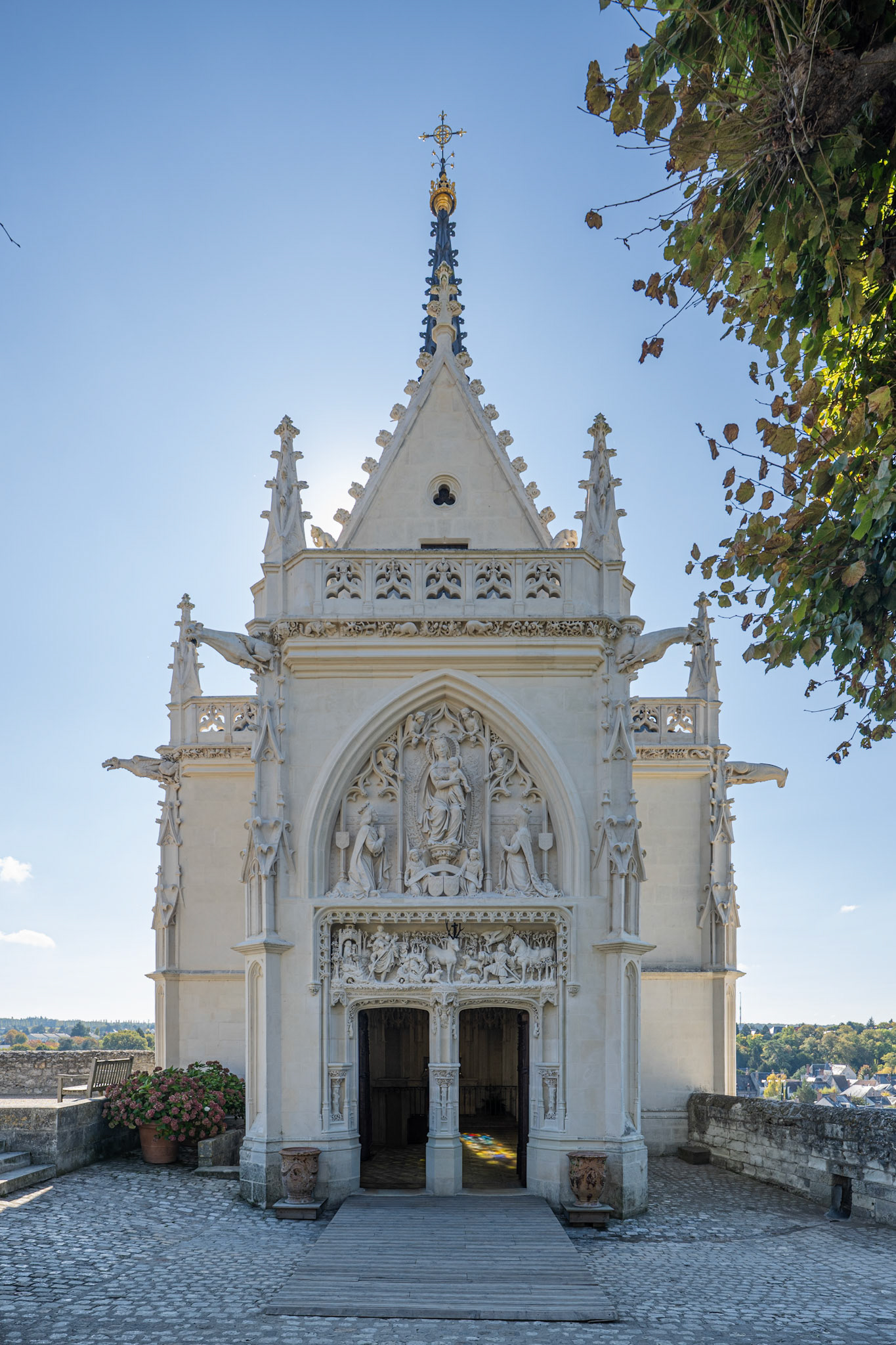
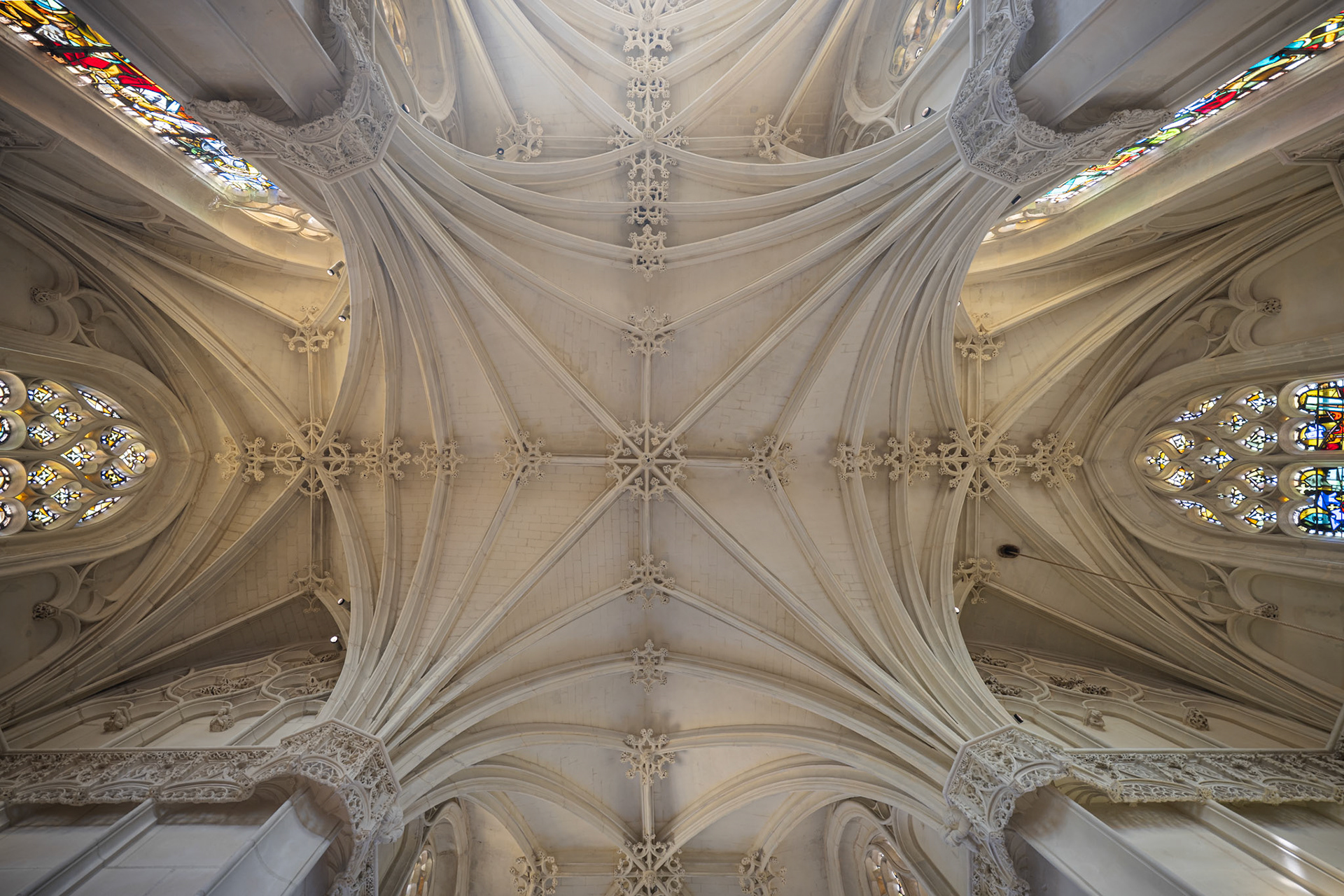
You may also like